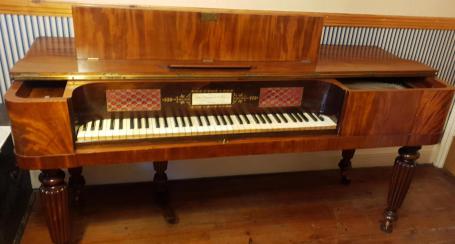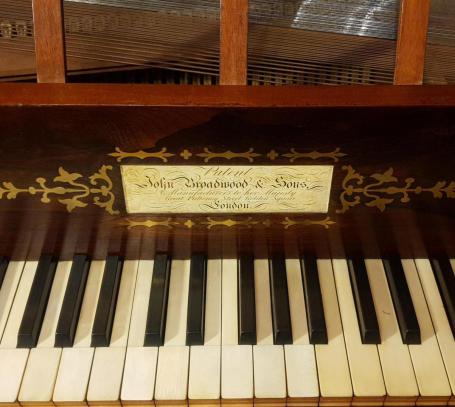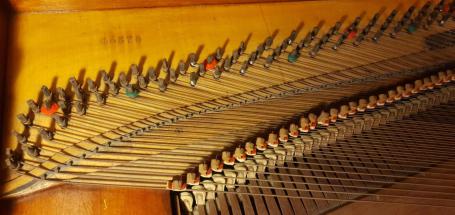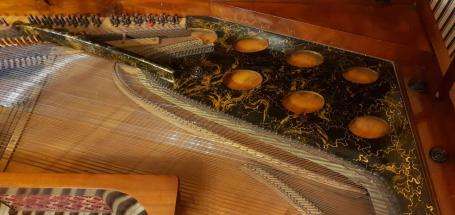
Broadwood 1835 N° 45,376 - Sold
This beautiful piano sold in record time - minutes rather than hours from listing! The details will stay here for a while, for the interest of ur readers. The seller wrote: In a very good original and playable condition. Formerly from the Kenneth and Mary Mobbs Keyboard Collection, and on loan to the Royal Academy of Music.
The piano has an entry in Martha Novak Clinkscale’s reference book: Makers of the Piano 1820 – 1860.
Nameboard inscription: Patent / John Broadwood and Sons / Maker to her Majesty / Great Pulteney Street, Golden Square / London
Keyboard compass FF – f4.
Four turned and reeded legs with castors.
Mahogany and rosewood. Brass frets backed with red silk.
The iron brace and hitch plate marbled in black and gold lacquer.
Interesting detailed archive information up until 1863 on the provenance of the piano, obtained from the Broadwood Company records.
One pedal, raising the dampers. Original, drilled wrestpins. Many early, possibly original, strings. The piano tuning very stable. Tuning hammer included.
English square piano ‘double-action’, with the addition of a check.
In 1825 James Shudi Broadwood patented a way of fitting a check similar to that found in the English grand piano action. Original instructions for its use are printed on a paper label on a batten above the key-levers.
****************
It is rare that we are able to offer a piano in such excellent and fully playable condition. It is a privilege to present this one, perfect for the music of the early romantic composers such as Mendelssohn and Schumann.
The seller recorded a short clip for us, taken from Johannes Brahms Intermezzo in A major, op. 118 no. 2. Beautiful music, beautifully played.
MP4 video/audio file [29.1 MB]
Our eagle-eyed readers will have noticed that athough the serial number and style of the piano indicate a date of 1834/5, the parchment nameplate refers to 'Her Majesty'. Our Dear Queen Victoria did not ascend the throne until June 1837, but this apparent anomaly is explained by the research carried out by Lina with the help of Alastair Laurence from Broadwood's as detailed in the following file:
JPG image [430.6 KB]
2/24




